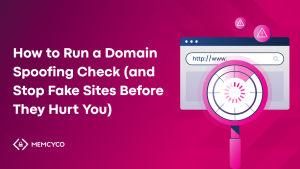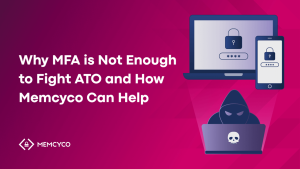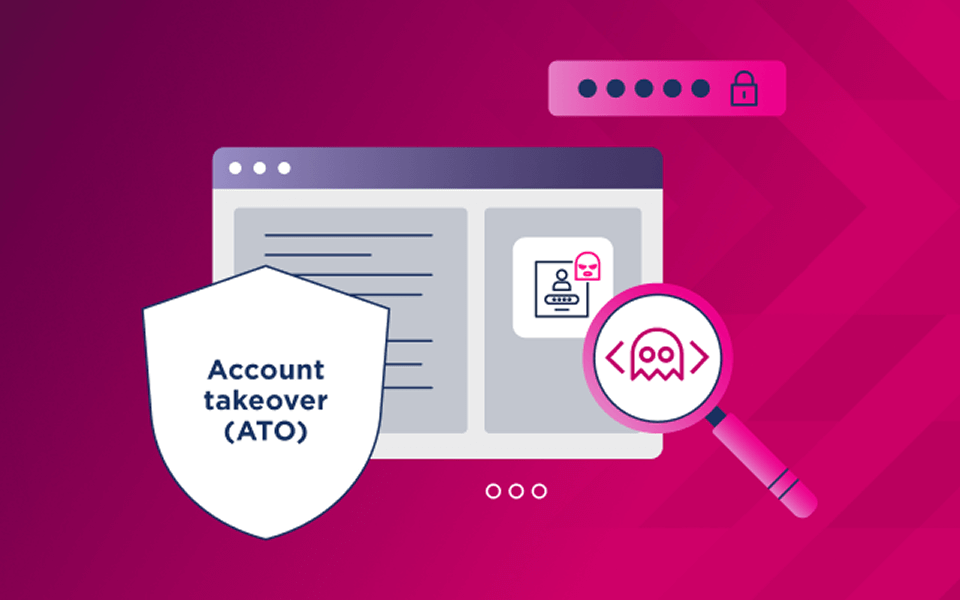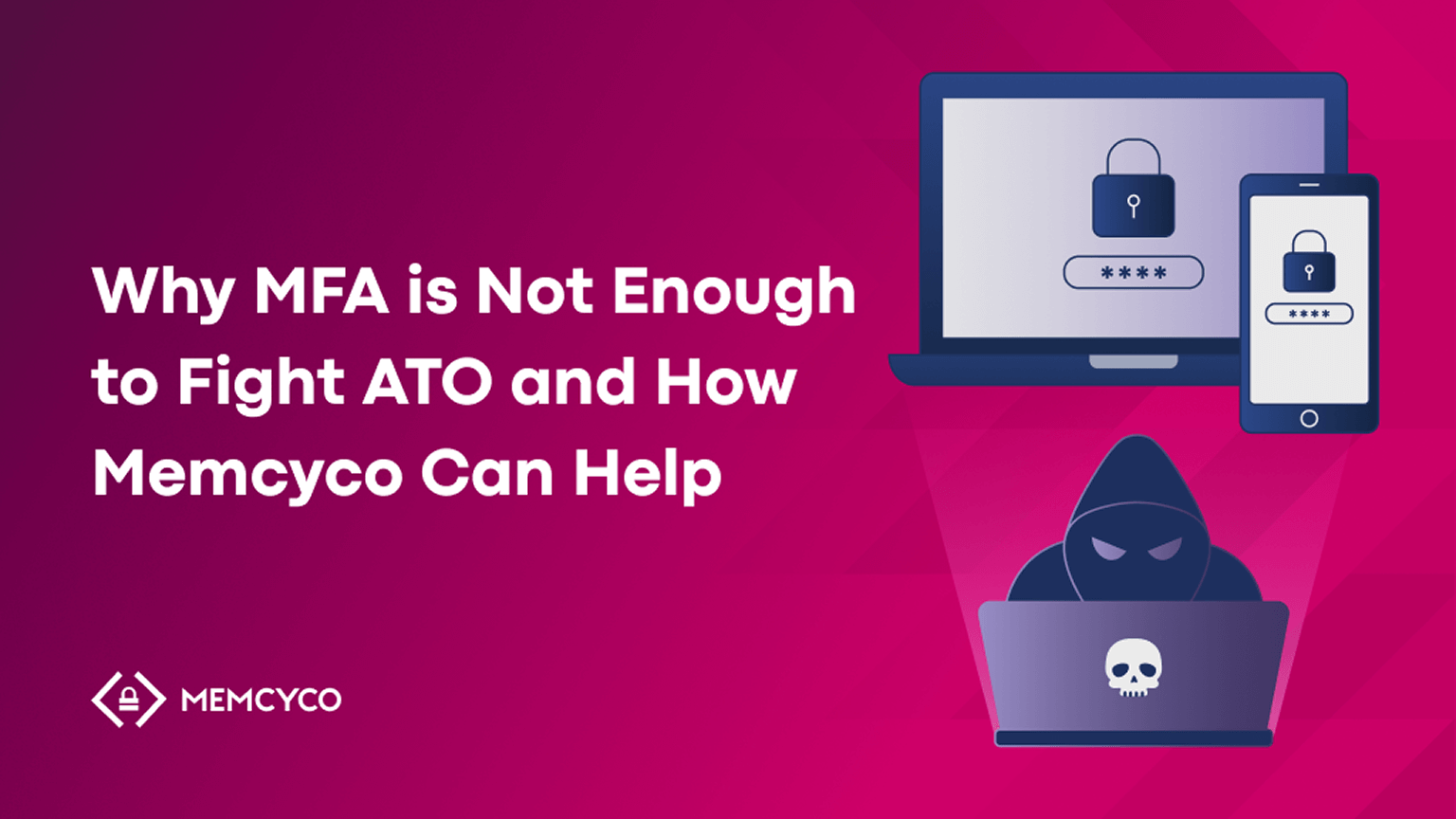Imagine this: a customer clicks a paid search ad that looks exactly like your brand—same logo, same layout, even your brand tone. They enter their login credentials, maybe their payment details… and they’ve just handed everything over to a scammer.
This is domain spoofing in 2025. And it’s scaling faster than most businesses are prepared for.
As phishing scams grow more sophisticated, attackers aren’t just sending shady emails—they’re building full-blown replicas of your site, complete with typosquatted domains and cloned user interfaces. For digital businesses, ecommerce platforms, and fintech apps, this isn’t a theoretical risk—it’s happening right now.
This blog walks you through how to check if someone is spoofing your domain, what to do if they are.
What Is Domain Spoofing and Why Should You Care?
Domain spoofing is one of the most dangerous and fastest-growing forms of digital impersonation fraud. It’s when attackers create websites that mimic your real domain using similar URLs, cloned branding, and lookalike user interfaces to trick customers into handing over credentials, payment info, or other sensitive data.
What makes it especially dangerous? It’s virtually invisible until it’s too late. By the time a spoofed site is flagged, the scam has already reached your users.
Phishing campaigns now increasingly rely on spoofed domains as the primary weapon. And with attackers using AI to spin up realistic fakes in minutes, domain spoofing has become a critical blind spot for businesses, especially in ecommerce, fintech, and digital services.
For a breakdown of how spoofing attacks are launched—including the infrastructure behind cloned sites—see A Step-by-Step Guide to Domain Spoofing Attacks.
How to Tell If Your Brand Is Being Spoofed Online
The harsh reality: by the time someone tells you there’s a fake version of your site out there, your brand has already been compromised.
But there are signs that domain spoofing might already be in play:
- Customer complaints like “your site won’t load,” or “I entered my info and nothing happened”, despite no changes on your end.
- Unusual drop-offs at login or checkout. Users may have been intercepted by a fake site.
- SEO poisoning or shady ads impersonating your brand, often leading to URLs that look nearly identical to yours.
- Traffic from unknown or suspicious referral links in your analytics, which may point to fake domains redirecting users.
These aren’t just support headaches, they’re indicators your customers may already be under attack.
How Do You Check If Someone Is Spoofing Your Domain?
Running a domain spoofing check isn’t a one-click task, but there are concrete steps you can take to uncover fakes:
Start with a basic manual sweep:
- Google your brand + login, checkout, or support and examine the top results and ads. Look for off-brand URLs or domains using different top-level domains (e.g., .co, .shop, .info).
- Use the site: operator with common typos or variants (e.g., site:yourcomapny.com, site:your-company.shop).
- Check for scam ads impersonating your brand via public ad libraries like Meta Ad Library or TikTok Ads.
🔍 Use free tools for deeper visibility:
- DNSTwist: Generates and scans for typo-based lookalike domains.
- URLscan.io: Checks suspicious links and captures visual screenshots of sites.
- VirusTotal: Analyzes URLs for known threat indicators and spoofing behavior.
Don’t forget mobile apps and ads:
Sophisticated impersonators often launch fake mobile apps or malicious ads that redirect users to cloned domains. Make sure to monitor app stores and ad placements that mention your brand.
Manual checks are a good start—but they’re limited to what’s already visible. And if a fake site hasn’t been indexed or flagged yet, you won’t catch it in time.
How to Detect and Block Spoofed Domains in Real Time
Traditional monitoring methods can’t keep up with today’s phishing campaigns. They scan for suspicious domains, but only once they’ve been registered, go live, or get reported. That’s reactive.
Memcyco’s approach is different. Instead of waiting for someone to stumble on a fake, we detect actual user traffic to spoofed domains in real time—before the scam succeeds.
Using AI and semantic similarity analysis, Memcyco identifies:
- Fake sites that visually mimic your real domain
- Unlisted impersonation domains that would evade conventional tools
- User sessions where a customer was exposed to the spoofed site
More than that, it flags which users were targeted, what asset was impersonated, and how the attack unfolded, giving you real-time insight and response capability.
This means:
- You can warn affected users immediately.
- You can stop attackers mid-scam, not after the fact.
- You can feed live attack data into your fraud and SOC systems,.boosting detection models and informing future defenses.
What Should You Do If Your Domain Is Being Spoofed?
Finding a fake site is only step one. Here’s what to do next:
1. Initiate a takedown request
Use tools like WHOIS or abuse contact info on the registrar’s site to file a takedown. Services like Google Safe Browsing can also flag dangerous domains.
2. Alert internal teams
Fraud, security, and digital teams should all be notified. Coordinate across departments to monitor user impact, prepare messaging, and initiate additional protections.
3. Deploy user-facing defenses
If you’re using Memcyco, trigger Red Alerts to inform users when they’ve visited a spoofed site. This reinforces trust and interrupts the scam’s lifecycle.
4. Use deception to disrupt the attacker
Memcyco can swap in decoy credentials or data to poison the scam’s value stream and expose the attacker’s methods.
5. Reclaim SEO & SEM territory
Spoofed sites often piggyback on your brand terms in search and ads. Use SEO poisoning defense tactics to reclaim visibility and flag suspicious links to ad platforms.
Why Traditional Domain Spoofing Checks Don’t Work Anymore
Most domain spoofing detection tools rely on passive monitoring—scanning domain registries, crawling the web, or waiting for third-party reports. These approaches are too slow and often miss what matters most: the moment a scam reaches your customer.
That’s where Memcyco flips the model.
Instead of just telling you a fake exists, it tells you:
- Which users landed on it
- Which site asset it copied
- Which device ran the attack
And it does this in real time—before credentials are stolen, before payments are redirected, and before your brand takes the hit.
If your current tools only help you clean up after the fact, it’s time to ask: What’s the real cost of being reactive?
FAQs About Domain Spoofing
How can I tell if someone cloned my website?
Look for unexpected customer complaints, strange referral traffic, or changes in search result rankings. You can also use tools like DNSTwist, URLscan.io, or a domain spoofing detection platform like Memcyco to identify visual copies or deceptive domains impersonating your brand.
What should I do if my domain is being spoofed?
Start by initiating a takedown request with the registrar or hosting provider. Then notify your fraud, security, and digital teams. Platforms like Memcyco can help you identify affected users, deploy Red Alerts, and feed threat data into your fraud engine in real time.
Can traditional spoof detection tools catch visual copycat sites?
No—most rely on DNS scans or user reports. They often miss sites that look like yours but use a different domain. Memcyco uses semantic similarity detection and browser-level signals to detect fake sites and stop attacks before users fall victim.
From Detection to Prevention: How to Fully Stop Domain Spoofing
Spotting a spoofed domain is no longer enough. If you’re only finding fakes after customers report them, you’re already playing catch-up.
Modern scams require modern defenses—ones that don’t just detect impersonation but interrupt it as it’s happening.
Memcyco is built for exactly that. With real-time visibility, AI-powered detection, and built-in disruption tactics, you don’t just watch attacks unfold—you stop them cold.
Want to see how it works in action? Schedule a product tour and find out how Memcyco saves global enterprises millions annually in digital impersonation scam losses and expenditure.


















